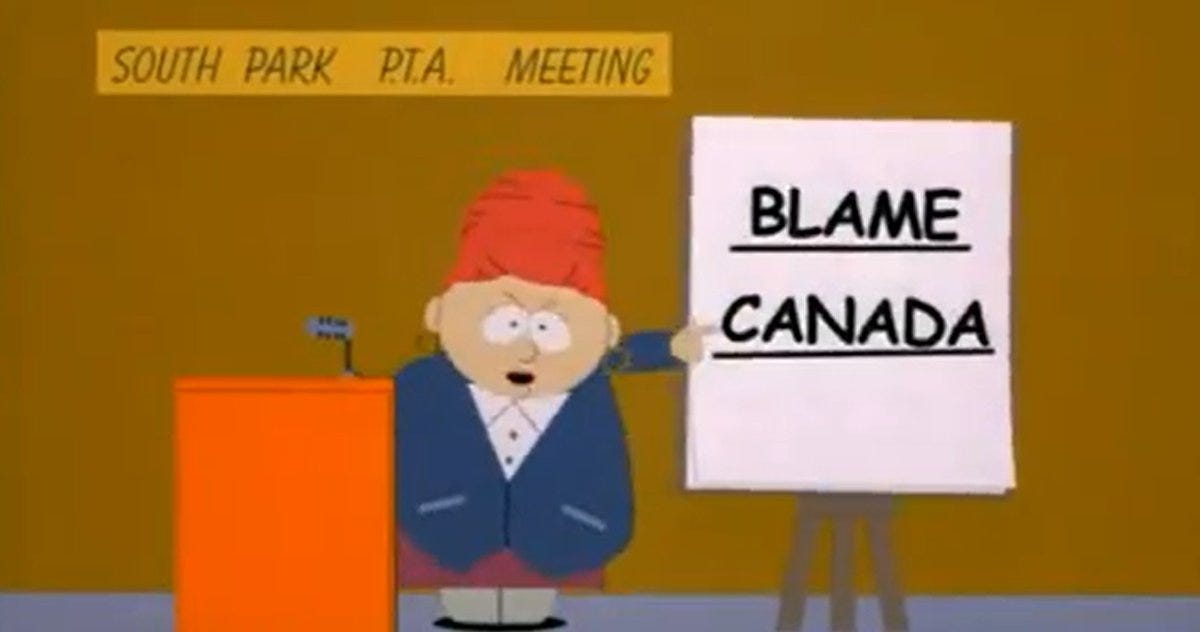Mexico deserves tariffs. But Canada?
Canada is not remotely near the enabler of illegal immigration and fentanyl distribution as Mexico. But its overt friendliness covers up a multitude of sins––on trade, defense and illegal immigration.
There is a world of difference between Canada and Mexico. Though left-wing parties govern both countries, Canada is a developed nation, Mexico is not. Canada wants to work with the U.S. to solve problems. Mexico is a dysfunctional joke. A paltry amount of fentanyl crosses the Canadian border, about .08% annually, while there is no limit to the flow across the southern border. And 1% of illegal immigrants come from Canada. A staggering amount emanates from Mexico. Most importantly, Canada is a free and responsible nation, though leaping headlong into Woke identity politics that brooks no governor on immigration and no end to the silencing of voices that are male, pale, and rooted in common sense.
Mexico is in bed with cartels, whether they want to admit it publicly or not. Mexico harbors criminals. Mexico does very little about the fentanyl crisis, let alone the vast illegal immigration into our nation. And Mexico nationalizes key industries, driving out American investments as it cozies up to China. It should be punished.
But Canada? I empathized when I watched the Canadian ambassador, Kirsten Hellman, on This Week with George Stephanopolous, say that Canadians were “perplexed” and then “hurt” by Trump’s imposition of 25% tariffs. There she was, in the most diplomatic way possible, expressing her country's desire to work with us on illegal immigration and fentanyl. Canada is our closest ally and best friend. It fought beside the U.S. in two world wars, Korea and Afghanistan. It rightly did not participate in the Iraq fiasco. South Park “Blame Canada” jokes aside, what has Canada done wrong?
Around 25,000 people illegally cross from Canada into the U.S. annually. By comparison, nearly 60,000 cross from Mexico into the U.S. illegally every month. Some try to cross the Swanton Sector, a border area from Eastern Ontario-Quebec to New Hampshire, New York State, and Vermont. This area was relatively quiet in the past, with several hundred to 1000 illegal crossings in a year. However, there was a rise to over 6000 crossings in 2023 and a surge far past that in the months since. While the Canadian government has promised over 1.3 billion dollars in more drones, helicopters, and human resources to fight this threat, that seems insufficient to appease the Trump government.
It’s not like Americans see tariffs on Canada as a splendid idea. A January Reuters/Ipsos poll found that just 37% of Americans support a new tax on Canadian goods. So, what has got Trump so angry with our generally amenable and seemingly harmless neighbor to the north?
Well, the number of fentanyl labs, money laundering operations, and human smuggling operations has increased significantly in Canada over the last few years. According to U.S. Customs and Border Control data, fentanyl seizures coming from Canada have increased by 200% in the last two years. Moreover, over the previous several years, the number of people on the Terror Watch List who are from Canada has grown to over 350. Mexico: 150. Bad actors are getting into Canada through its lax education system. They successfully apply for student visas, only then stop showing up for classes and enter America.
Then there are the tariffs Canada places on the U.S. According to World Bank figures from 2022, Canada imposes a 275% tariff on milk, 245% on cheese, 238% on chicken, 69.9% on sausage, 48% on copper, 45% on aluminum, and 45% on TVs. That is not exactly fair. And then you factor in the subsidies that Canada offers, say, the lumber industry, allowing it to sell at below-market prices under a system called supply management, and you start to realize how rigged this relationship is in Canada’s favor. When you add that Canada only spends 1.4% of its GDP on defense (the bare minimum NATO requirement is 2%) and that the U.S. shoulders "the lion’s share” of the cost of NORAD (the North American Air Defense Comand), you quickly see that those hosers in Ottawa are taking the U.S. for a ride.
Normally cordial, Canada is not taking the Trump tariffs sitting down. A few hours after Trump announced tariffs, hockey fans in the capital of Ottawa booed “The Star Spangled Banner.” The same thing happened Sunday at an NBA game between the Toronto Raptors and the Los Angeles Clippers. Liquor stores are planning to ban liquor from the red states of America. And non-alcoholic products made in red states, such as Florida orange juice, are also being boycotted. In total, $105 billion in American goods will be tariffed in retaliation.
But this will not end well for our neighbors to the north. 22% of Canada’s GDP comes from exports to the U.S., while 1.5% of U.S. GDP is from exports to Canada. America can do just fine without Canada, but in no universe can the same thing be said in reverse. While at first blush seemingly benign, Canada is, in fact, far from it. Canada needs to step up “bigly” or face the pain.





Jim, this is the first explanation I have heard for the Tariffs. So now I see there are some relatively little issues. Trump has an interesting extreme strategy. Is this a tactic of the "Art of the Deal?". Did he do this in his last term? He has been threatening war (for Greenland and Panama) and extreme tariffs as a starting point for negotiation then backs off.